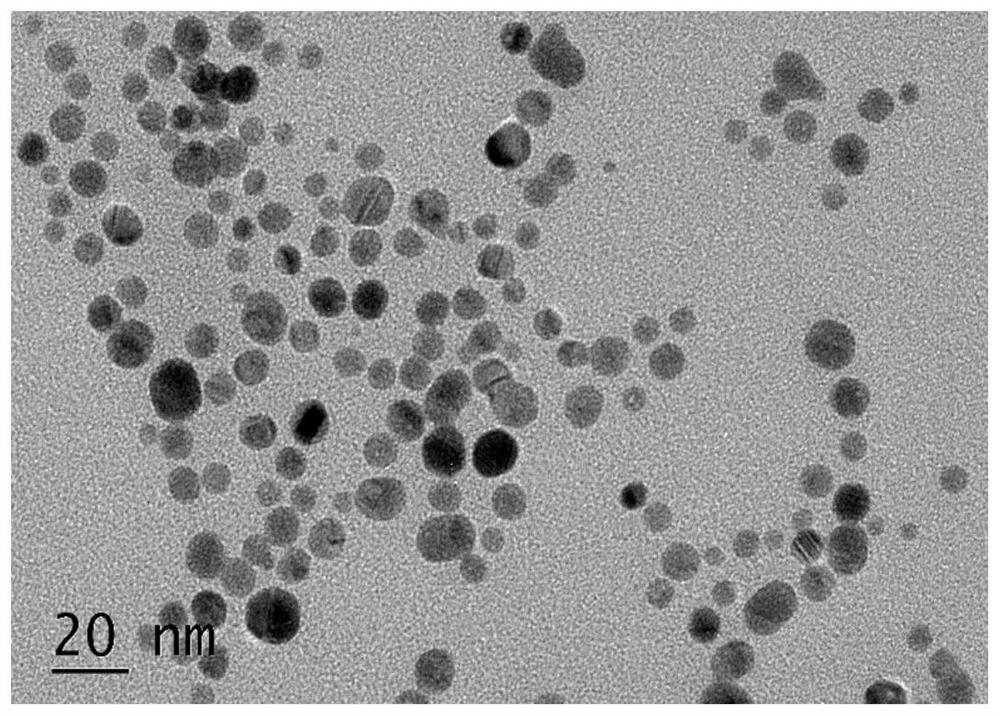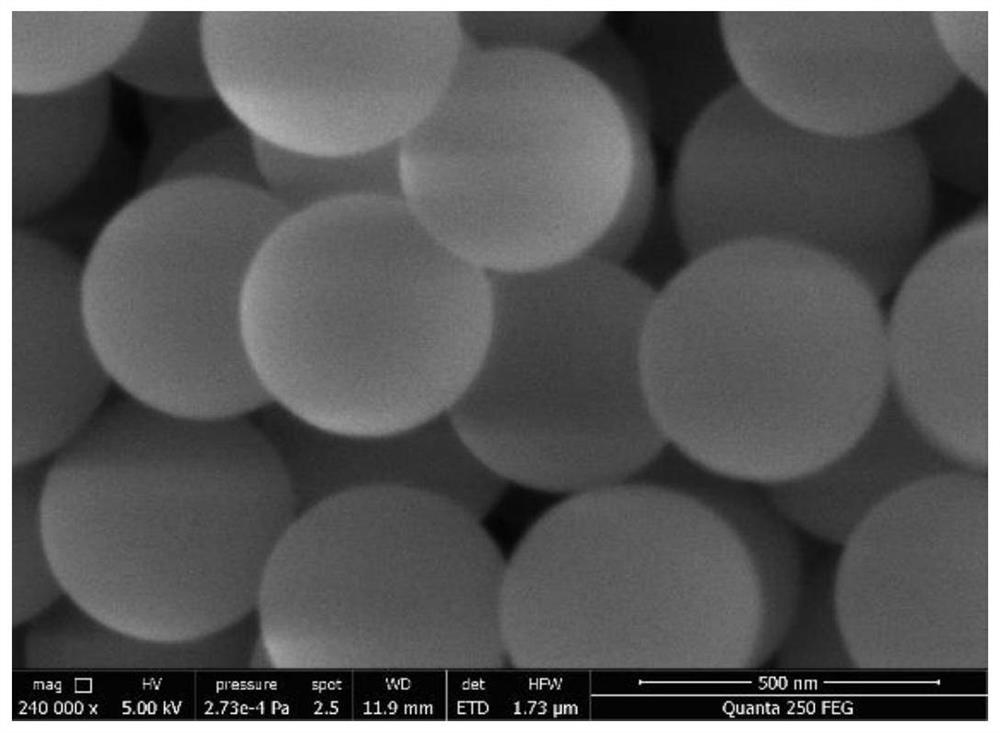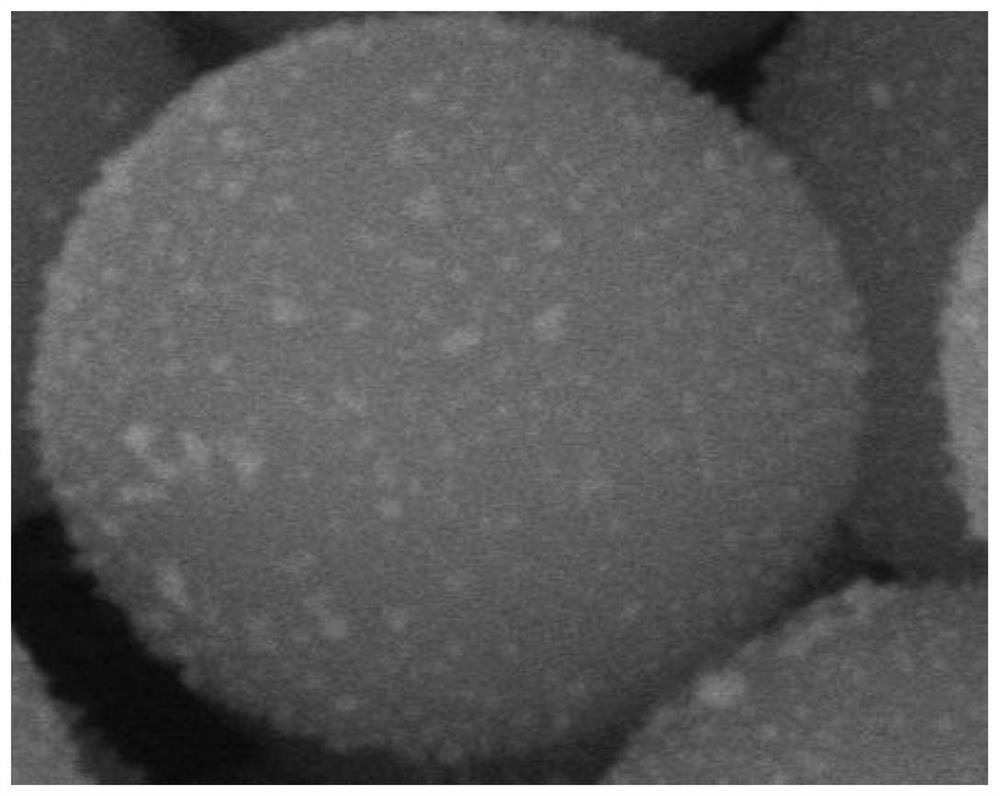Photocatalytic material for efficiently removing high-concentration nitrate through photocatalysis as well as preparation method and application of photocatalytic material
A photocatalytic material, photocatalytic technology, applied in catalyst activation/preparation, chemical instruments and methods, physical/chemical process catalysts, etc. Evaluation and other issues to achieve the effect of promoting photocatalytic activity, high reduction catalytic activity, and overcoming competition problems
- Summary
- Abstract
- Description
- Claims
- Application Information
AI Technical Summary
Problems solved by technology
Method used
Image
Examples
Embodiment 1
[0044] This embodiment provides a method for preparing a photocatalytic material for highly efficient photocatalytic removal of high-concentration nitrate, including the following steps:
[0045] Step 1, prepare citrate-stabilized silver nanoparticles: 8mL 40mmol L -1 Sodium citrate solution as a stabilizer was added to 100mL 1mmol L -1 in the silver nitrate solution. 2ml 112mmol·L at room temperature -1 NaBH 4 Add the solution dropwise to the above mixture and stir vigorously (1000-1400rpm) to obtain a yellow-brown silver nanoparticle sol solution. Store the obtained silver sol in a refrigerator at 4°C and let it stand for 24 hours to decompose the remaining NaBH 4 , for subsequent use.
[0046] Step 2. Synthesis and functional modification of SiO 2 : Add 0.6ml of tetraethyl silicate dropwise to a mixed solution of 25mL of water, 15mL of ammonia water and 60mL of isopropanol. The reaction was continued for 30 min with vigorous stirring (1000-1400 rpm) in a 35 °C water ...
Embodiment 2
[0057] This embodiment provides a method for preparing a photocatalytic material for highly efficient photocatalytic removal of high-concentration nitrate, including the following steps:
[0058] Step 1, prepare citrate-stabilized silver nanoparticles: 8mL 40mmol L -1 Sodium citrate solution as a stabilizer was added to 100mL 1mmol L -1 in the silver nitrate solution. 2ml 112mmol·L at room temperature -1 NaBH 4 Add the solution dropwise to the above mixture and stir vigorously (1000-1400rpm) to obtain a yellow-brown silver nanoparticle sol solution. Store the obtained silver sol in a refrigerator at 4°C and let it stand for 24 hours to decompose the remaining NaBH 4 , for subsequent use.
[0059] Step 2. Synthesis and functional modification of SiO 2 : Add 0.6ml of tetraethyl silicate dropwise to a mixed solution of 25mL of water, 15mL of ammonia water and 60mL of isopropanol. The reaction was continued for 30 min with vigorous stirring (1000-1400 rpm) in a 35 °C water ...
Embodiment 3
[0067] This embodiment provides a method for preparing a photocatalytic material for highly efficient photocatalytic removal of high-concentration nitrate, including the following steps:
[0068] Step 1, prepare citrate-stabilized silver nanoparticles: 8mL 40mmol L -1 Sodium citrate solution as a stabilizer was added to 100mL 1mmol L -1 in the silver nitrate solution. 2ml 112mmol·L at room temperature -1 NaBH 4 Add the solution dropwise to the above mixture and stir vigorously (1000-1400rpm) to obtain a yellow-brown silver nanoparticle sol solution. Store the obtained silver sol in a refrigerator at 4°C and let it stand for 24 hours to decompose the remaining NaBH 4 , for subsequent use.
[0069] Step 2. Synthesis and functional modification of SiO 2 : Add 0.6ml of tetraethyl silicate dropwise to a mixed solution of 25mL of water, 15mL of ammonia water and 60mL of isopropanol. The reaction was continued for 30 min with vigorous stirring (1000-1400 rpm) in a 35 °C water ...
PUM
 Login to View More
Login to View More Abstract
Description
Claims
Application Information
 Login to View More
Login to View More - R&D Engineer
- R&D Manager
- IP Professional
- Industry Leading Data Capabilities
- Powerful AI technology
- Patent DNA Extraction
Browse by: Latest US Patents, China's latest patents, Technical Efficacy Thesaurus, Application Domain, Technology Topic, Popular Technical Reports.
© 2024 PatSnap. All rights reserved.Legal|Privacy policy|Modern Slavery Act Transparency Statement|Sitemap|About US| Contact US: help@patsnap.com










